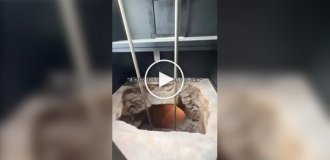Bobbitt worm: they turned the ocean into a death trap (10 photos)
The monster lives in the warm waters of the Atlantic, Pacific and Indian Oceans. The worm prefers sandy and muddy shores, as well as coral reefs at depths of up to 95 meters. So, if you do not walk on the ocean floor, you have nothing to fear. 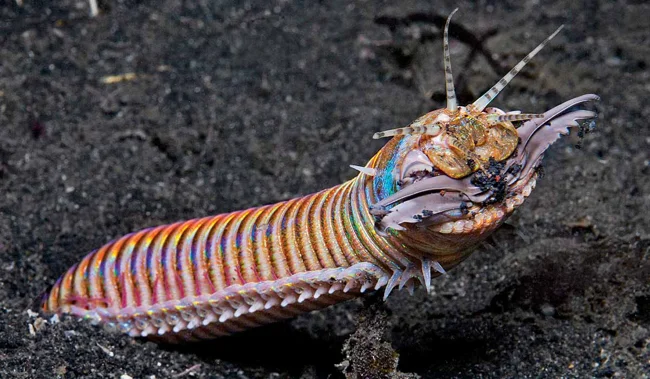
The Great Worm has arrived.
If you still want to meet this horror, then write down the recipe: the population density of worms is low, in an area of 10-15 hectares there can be only 3-5 creepy creatures. Therefore, look for them in coral reefs - there will be more animals there. 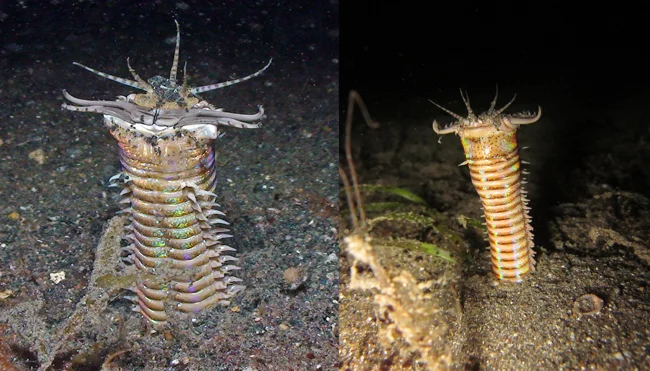
Initially, the creature may seem very small, but in the thickness of the soil there are still several meters hidden.
It is very difficult to find a worm during the day: it sits in the sand up to its eyes, and only its jaws-traps with 5 pairs of antennae stick out, acting as a trigger for a live trap. That's what you need to touch with your toe. The whiskers are very sensitive to vibrations and at the slightest approach of something towards our guest, the jaws will immediately lunge and clench. 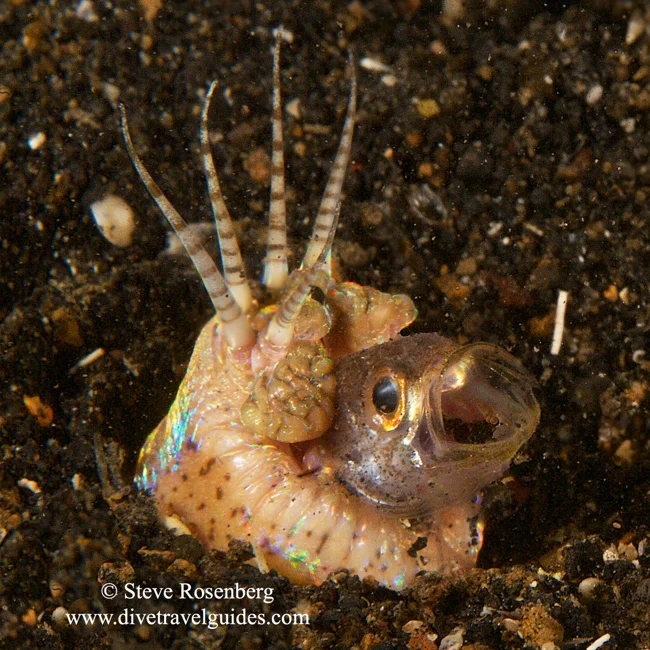
When you overheat in your sleeping bag and get out to breathe a little.
But if you touch them not with your limb but, for example, with a pre-prepared fish carcass, then at first you will be surprised at how easily the jaws rip open the fish scales, and then you will be able to pull the sand dweller out into the light of day and be horrified to your heart's content. 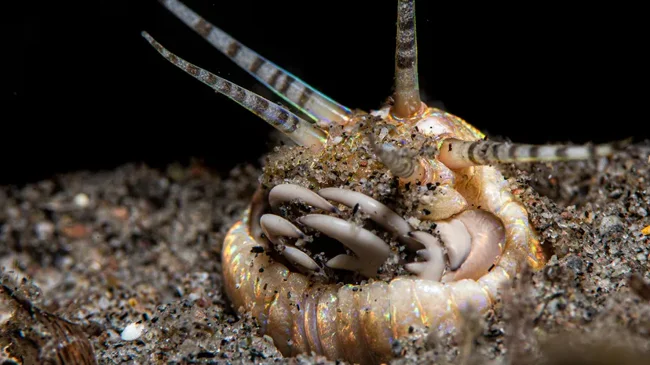
The jaws of the family that includes bobbit worms are so strong that they are perfectly preserved in fossils. And this is a great rarity for invertebrates!
It does not look like a worm at all! Where is the soft pink ringed body? Why is this monster encased in a strong exoskeleton and actively resisting with hundreds of small legs? What kind of worm is this, it is a predatory centipede 3 meters long and weighing half a kilo! 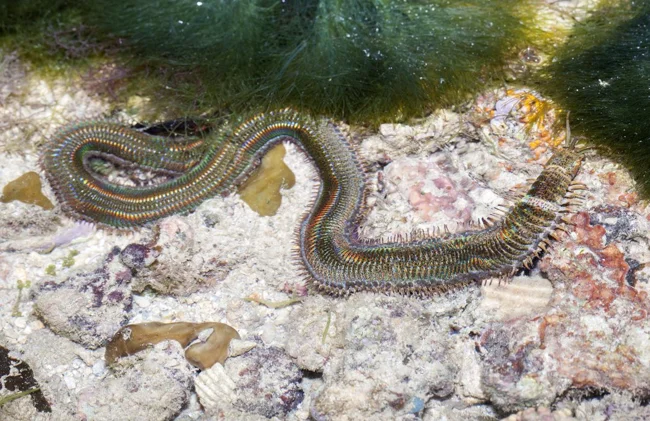
A rare shot of a worm deciding to crawl out of the ground.
Unfortunately or fortunately, centipedes have not yet mastered the ocean floor. But it has been actively populated by polychaete worms, to which the Bobbitt worm belongs. These worms, distant relatives of earthworms, have come up with the idea of anchoring themselves in the sand using parapodia - long bristles that are controlled by muscles located at the base. Therefore, it can be difficult to get them out without damaging them. 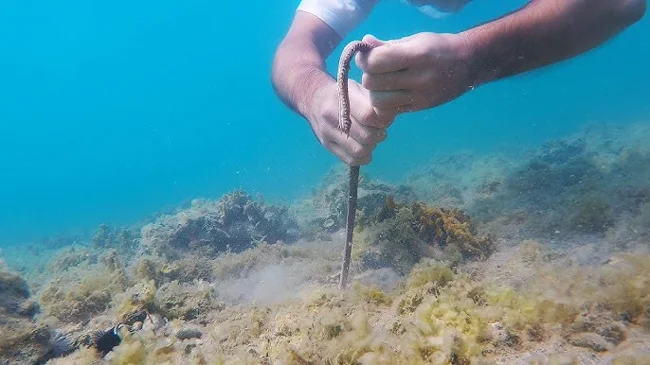
We pull and pull, but we can't pull it out!
If you don't want to tyrannize the animal or feed it with parts of your body, it's better to watch it at night. After all, at night the animal switches from the mode of an ambush predatory trap to the mode of a curious macaroni. The worm sticks out halfway from its hole and begins to carefully sniff and examine the surroundings for tasty fish and shrimp. And you can even shine a flashlight beam on it to provoke an attack! 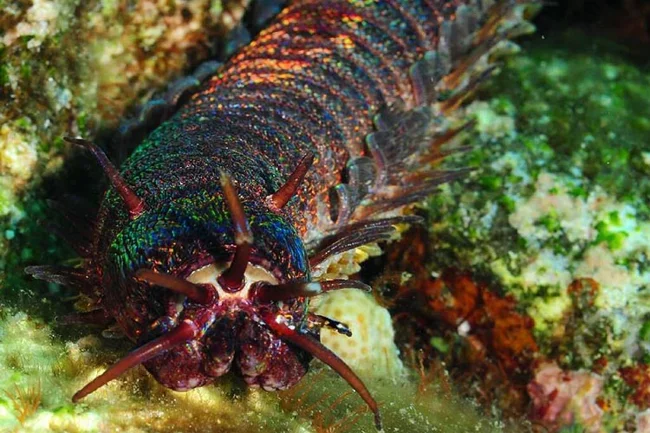
In a calm state, the worm looks even scarier...
Unlike most polychaete worms, Bobbitt worms are not capable of asexual reproduction. Why? The answer is obvious - because God is merciful, and does not want the ocean floor to turn into thickets of living traps. And sexual reproduction in worms is the stupidest of all possible. When the time comes, both males and females simply throw their reproductive products into the ocean and hope that it will somehow get there on its own. No mating games to select partners, no more efficient ways of transferring genes. Primitives! 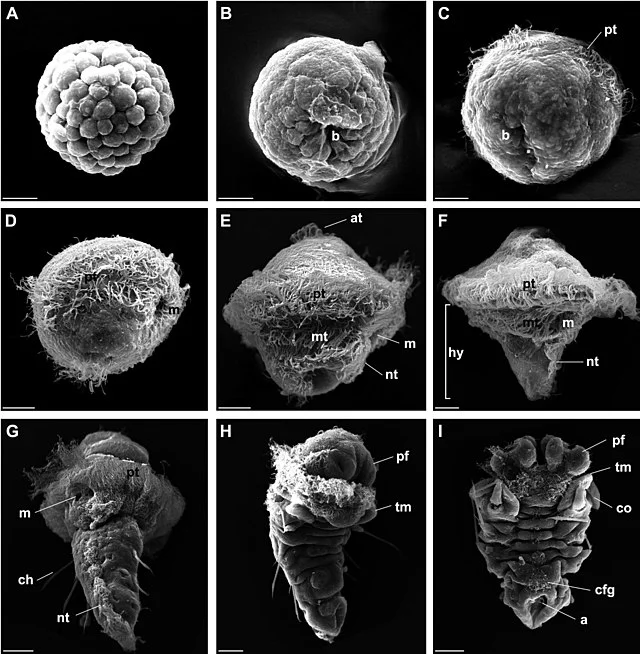
Polychaete worms have many different types of larvae. But they are all equally unattractive...
But if by some miracle the sperm finds an egg, then after fertilization and a short period of embryo development, a trochophore is formed from it - a small, free-swimming larva that will quickly swim away from its relatives. And when it gets tired of swimming, it will settle to the bottom and degenerate into a new Bobbit worm. 
Sat down on the bottom. Reborn. Waiting for treats.
Moreover, sometimes these worms settle in dead corals, which then end up in aquariums with marine animals. Realizing that there is plenty of tasty and defenseless prey around, the worm begins to methodically transform the creatures into new segments of its body. Due to its secretive lifestyle, the Bobbitt worm may not reveal itself for many months, driving the poor aquarist crazy! 
He snuck into the aquarium and sits there contentedly. And well-fed.








